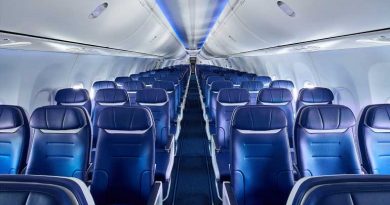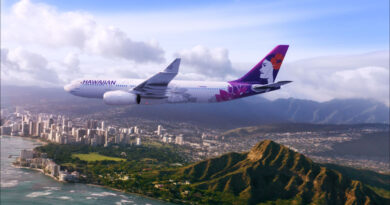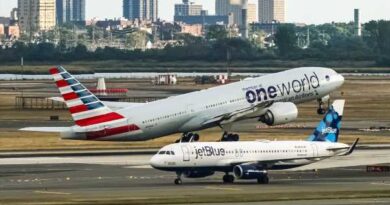Some regional aircraft may be affected by 5G interference
The FAA continues to expand the list of aircraft that are approved to perform low-visibility landings at airports where AT&T and Verizon have deployed new 5G capabilities.
But the trade association that represents regional airlines is still warning of potential disruptions.
“We still can’t operate into many large airports and many more spoke airports. And that is going to be a problem when bad weather comes,” said Regional Airline Association CEO Faye Malarkey Black.
On Thursday, the FAA issued new approvals allowing some Embraer E170 and E190 regional aircraft to land in low-visibility conditions. The FAA estimates that 78% of commercial aircraft in the U.S. have now received such approvals, including the large majority of Boeing and Airbus narrowbody and widebody aircraft in commercial use.
Approvals are issued when manufacturers are able to demonstrate that radio altimeters on a particular aircraft type are not susceptible to interference during approaches from broadband transmissions on the C-Band spectrum, which is the spectrum occupied by AT&T and Verizon 5G service. Aircraft use altimeters to track their altitudes at 2,500 feet and below.
- Related: American Airlines confident that 5G issue is resolved
Despite Thursday’s new approvals, the FAA also said that altimeters on some aircraft types likely will prove too susceptible to 5G interference to get a sign-off. That could be bad news for operators of the remaining regional aircraft that have not gotten such approvals.
The first significant example of the impact the new 5G deployment could have on regional flights came on Jan. 20, when San Francisco’s airport had low-visibility conditions. As a result, more than 20 regional aircraft had to enter into a holding pattern that lasted hours, according to Aerology, a blog that tracks flight disruptions. The blog is penned by Tim Donohue, a former leader of United’s station operations at Newark Airport.
Five regional flights ended up diverting from Salt Lake City that morning, the Washington Post reported, citing the website Flightradar24.
“That is a small harbinger of what we could see if we had a bad widespread weather event,” warned Black.
The potential for future disruptions of this sort is being recognized by the FAA, which on Thursday and Friday issued advisories warning of airports that could be impacted by diversions that day due to the combination of bad weather and the interference on radio altimeters from 5G transmissions.
On Friday, the FAA listed Charlotte, Raleigh-Durham, Seattle, Jacksonville, Oakland, San Francisco, San Jose and Sacramento on its 5G advisory.
Disruptions relating to the 5G rollout are occurring despite the agreement reached between the FAA and Verizon and AT&T on Tuesday under which the telecom companies agreed to transmission buffer zones of one mile around 86 airports.
The buffer zones reduce signal strength of C-Band transmission by a factor of 10, according to a letter sent by the CEOs of Verizon and AT&T to the DOT and FAA in early January. However, they don’t eliminate the signals.
Source: Read Full Article



